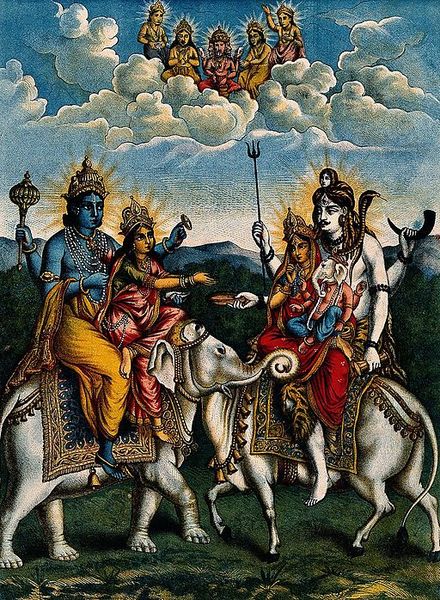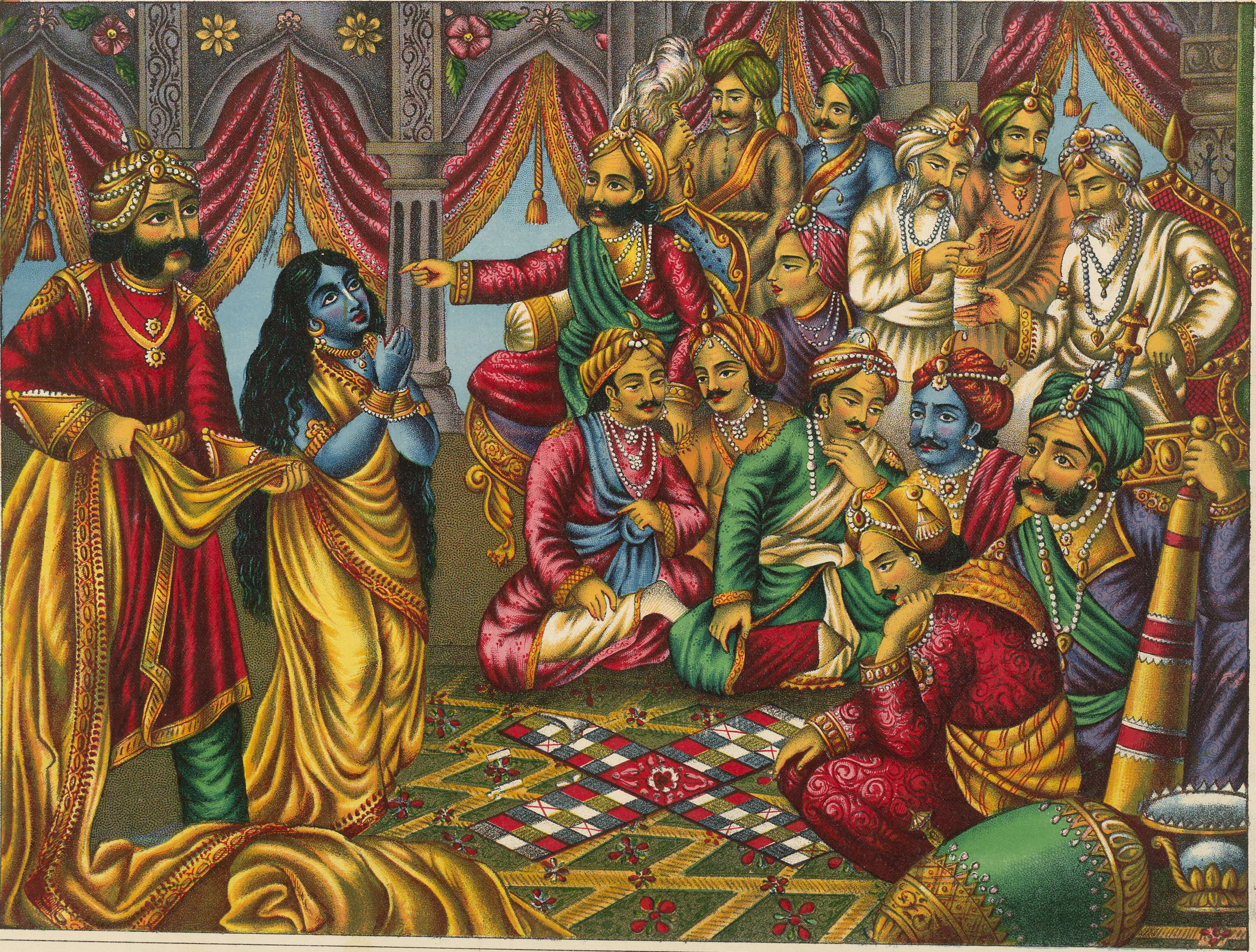 |
| (Battle between Rama and Ravana. Image Source: Wikimedia.) |
7. When the Rains Cease Hanuman and Angada become trapped in a cavern while on their search for Sita. They were about to accept defeat when they met with Sampathi who told them that he had seen Ravana carry Sita to Lanka. In order to get there, Hanuman must be able to cross the ocean. He became a giant (Mahendra mountain) and crossed the ocean in one stride.
8. Memento from RamaHanuman became super tiny in order as he continued his search for Sita. He finds Sita being guarded by demons. He then saves her and destroys Ravana’s capital to ashes.
9. Ravana in CouncilRavana’s capital is now rebuilt into the divine architect Maya. Ravana’s brother, Kumbakarna, first states that what Ravana has done was wrong. He then suggests that since Ravana has already gone too far past the point of return that he should just keep going till the end. Ravana’s youngest brother, Vibishana, urges his brother to stop the terrible path he is going down. He tells Ravana to release Sita but Ravana ignores his request. After multiple attempts to persuade Ravana to stop his tyranny, Ravana orders him to leave. Vibishana then heads to where Rama was residing.
10. Across the OceanUpon Vibishana’s arrival, everyone is hesitant on trusting him. Hanuman is the only one that believes that Vibishana is not evil.
Vibishana spoke to Rama and gave him insight on Ravana’s plans.
When Rama and his army tried to cross the ocean, they encountered the sea god. He refused to make a path for them but then Rama threatened to shoot his arrows at the sea which therefore led the sea god to surrender to him and help him build a bridge through the sea.
11. The Siege of LankaThe battle started to take place between Ravana and Rama’s army. Ravana started to show signs of defeat. Rama then told him to go and come back with fresh weapons. Ravana then left to summon his brother, Kumbarkarna, from his deep sleep. Kumbarkarna almost defeated Rama’s army but in the end Rama was able to defeat him with his arrows. One of Ravana’s sons, Indrajit, disguised himself as Sita and tried to use her to his advantage as their weakness. He killed himself in front of them to cause them pain but in the end his plan did not succeed. Ravana was at his breaking point and was going to kill Sita to end it all but some of his people advised him not to.
12. Rama and Ravana in BattleAfter suffering from so many losses, Ravana sought to fight the battle on his own. The gods believed that Rama would need all the help he could get so they sent him a chariot. Rama planned to beat Ravana by taking the battle slow and steady while Ravana, blinded by his anger, would become exhausted from moving too fast. Mahodara, one of Ravana’s assistants, tried to go full force on Rama but, in the end, failed. Ravana was now angrier than ever. Many things started to foreshadow Ravana’s defeat. The battle continued with what seemed like to no end. After so many of his weapons failing, Ravana decided to use the “Maya”, which was a weapon that created illusions and caused confusion. In the end, Rama was able to defeat Ravana by using the “Brahmasthra”. He pierced the heart of Ravana and finally ended the battle
Bibliography















